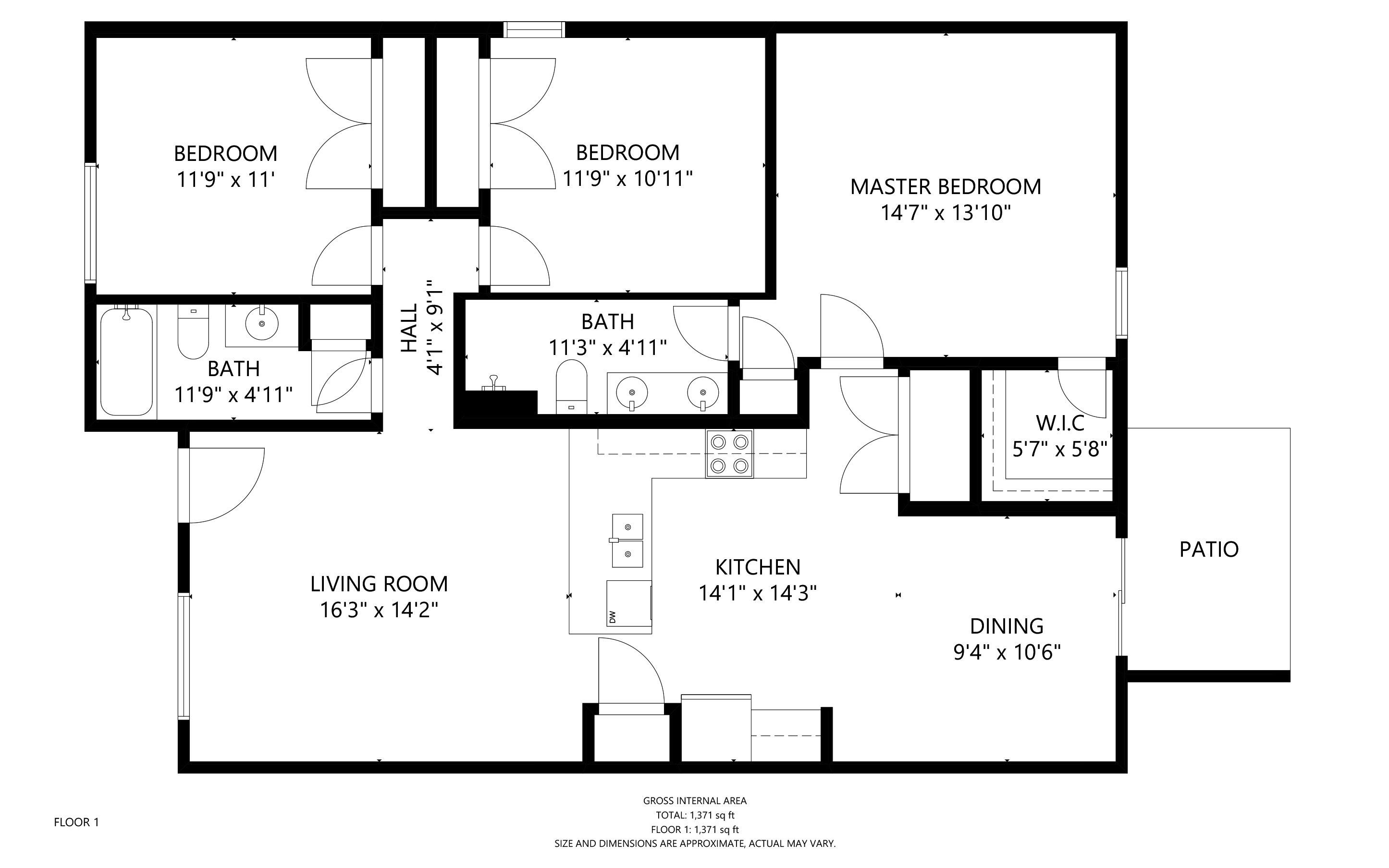Understanding Two-Bedroom Floor Plans

A two-bedroom floor plan is a common residential design, offering a balance of space and functionality for individuals, couples, or small families. These plans typically include two bedrooms, a living room, a kitchen, at least one bathroom, and often additional spaces like a dining area or a laundry room.
Typical Layout and Features, Two bedroom floor plan
The layout of a two-bedroom floor plan can vary significantly depending on factors such as the overall square footage, the target demographic, and the architectural style. However, some common features include:
- Bedrooms: Two bedrooms, typically separated for privacy, with varying sizes depending on the overall floor plan.
- Living Room: A central space for gathering and relaxation, often connected to the kitchen or dining area.
- Kitchen: A functional space for preparing meals, typically equipped with appliances like a stove, oven, refrigerator, and sink.
- Bathroom: At least one bathroom, often with a shower or bathtub, a toilet, and a sink.
- Dining Area: A designated space for dining, which can be separate or integrated with the kitchen or living room.
- Laundry Room: In some floor plans, a dedicated laundry room with a washer and dryer.
- Storage: Closets and other storage spaces for belongings.
Advantages and Disadvantages of Different Configurations
Two-bedroom floor plans come in various configurations, each with its own advantages and disadvantages.
- Open Concept: This configuration features a seamless flow between the living room, kitchen, and dining area, creating a spacious and airy feel.
- Advantages: Open concept floor plans promote social interaction, maximize natural light, and can make smaller spaces feel larger.
- Disadvantages: Open concept floor plans can lack privacy and sound insulation, and may not be suitable for everyone’s lifestyle.
- Split-Level: This configuration features different levels within the floor plan, often with bedrooms located on a separate level from the living and kitchen areas.
- Advantages: Split-level floor plans offer a sense of separation and privacy, and can be more efficient for utilizing space, especially in smaller homes.
- Disadvantages: Split-level floor plans can be challenging for individuals with mobility issues, and may require more stairs for daily movement.
- Traditional: This configuration features a more traditional layout with distinct rooms for each function, such as separate living, dining, and kitchen areas.
- Advantages: Traditional floor plans offer a sense of formality and privacy, and can be suitable for families with young children.
- Disadvantages: Traditional floor plans can feel less spacious and may not be as flexible for modern lifestyles.
Examples of Two-Bedroom Floor Plans
Two-bedroom floor plans come in various sizes and target demographics. Here are some examples:
- Small Two-Bedroom Apartment (600-800 square feet): This floor plan is typically designed for individuals, couples, or small families with limited space requirements. It often features a compact kitchen, a combined living and dining area, and smaller bedrooms.
- Mid-Sized Two-Bedroom Condo (800-1200 square feet): This floor plan offers a balance of space and functionality, with larger bedrooms, a separate dining area, and potentially a balcony or patio.
- Spacious Two-Bedroom Townhouse (1200-1800 square feet): This floor plan provides ample space for families, with larger bedrooms, a dedicated home office, and potentially a finished basement or attic.
Designing Your Dream Two-Bedroom Floor Plan: Two Bedroom Floor Plan

Crafting a two-bedroom floor plan that perfectly suits your needs and aspirations is an exciting endeavor. It’s an opportunity to create a space that reflects your lifestyle, accommodates your family, and fosters a sense of comfort and harmony.
Understanding the Importance of Lifestyle Needs, Family Size, and Personal Preferences
Before embarking on the design process, it’s crucial to consider your unique circumstances and preferences. Your lifestyle, family size, and personal taste will shape the functionality and aesthetics of your dream floor plan.
- Lifestyle Needs: Reflect on your daily routines and activities. Do you work from home? Do you entertain frequently? Do you need a dedicated space for hobbies or exercise? Consider how your floor plan can support these activities.
- Family Size: The number of people living in the home will influence the number of bedrooms, bathrooms, and living spaces needed. If you have children, consider their age and future needs, such as play areas or study spaces.
- Personal Preferences: Your personal style and aesthetic preferences will play a significant role in shaping the overall feel of your floor plan. Do you prefer open and airy spaces or cozy and intimate settings? Do you enjoy natural light or prefer a more secluded atmosphere?
Creating a Hypothetical Two-Bedroom Floor Plan for a Young Couple
Let’s imagine we’re designing a two-bedroom floor plan for a young couple who enjoys cooking and entertaining but also values privacy and relaxation.
- Open-Concept Living and Kitchen: This layout fosters a sense of spaciousness and allows for easy flow between the living, dining, and kitchen areas. The couple can enjoy preparing meals while interacting with guests or relaxing in the living room.
- Separate Master Bedroom Suite: This provides a private sanctuary for the couple, featuring a spacious bedroom, a walk-in closet, and a luxurious bathroom. The bathroom could include a separate shower and soaking tub for added indulgence.
- Second Bedroom with Flexibility: The second bedroom can serve as a guest room, a home office, or a hobby room, depending on the couple’s needs. This versatility adds value to the floor plan.
- Outdoor Living Space: A small patio or balcony provides a connection to the outdoors, allowing the couple to enjoy fresh air and natural light.
“A well-designed floor plan should not only meet your functional needs but also enhance your quality of life.”
